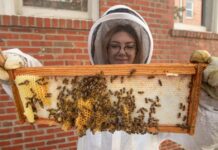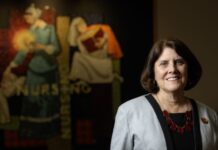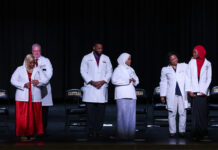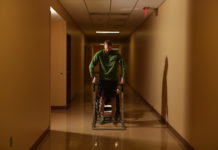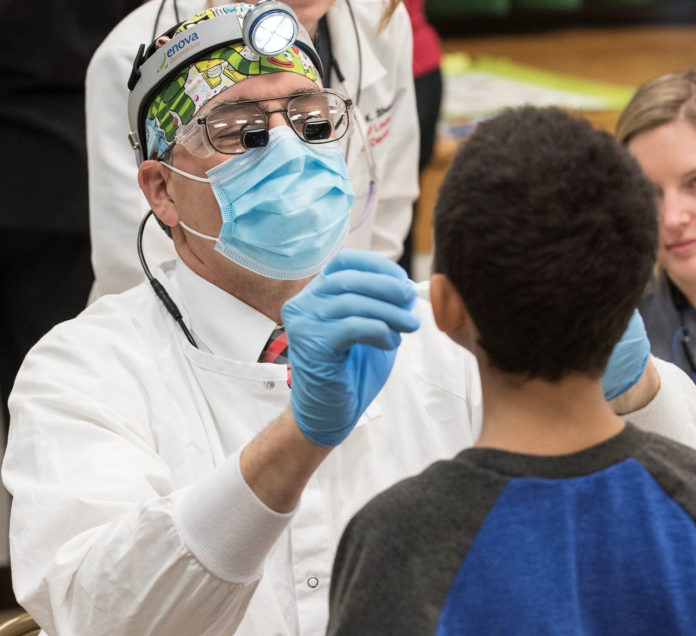
Access to oral health care has increased since 2001, yet more children face urgent dental needs, according to a new study co-released by Delta Dental of Kentucky and Kentucky Youth Advocates. The report, Making Smiles Happen: 2016 Oral Health Study of Kentucky’s Youth, presents findings of the first oral health surveillance study of Kentucky children in 15 years.
Delta Dental of Kentucky partnered with Kentucky Youth Advocates and the University of Louisville School of Dentistry through Delta Dental of Kentucky’s charitable initiative, Making Smiles Happen, to conduct the statewide survey of children’s oral health.
“We are proud to support this initiative because we firmly believe that the well-‐being of our children is the key to the future health and success of our families, communities, and businesses,” said Dr. Clifford Maesaka, president and CEO of Delta Dental of Kentucky. “Data is the only real tool to level set with respect to oral health. In order to improve, we need to know where we’re starting. If we know where we are, we can measure improvement. That is what this surveillance project is all about.”
To carry out the study, a dentist from the University of Louisville visited 60 schools across five regions of the state to observe the mouths of 3rd and 6th graders. The study also asked parents about family oral health history, resulting in the collection of data for over 2,000 students.
“It was a privilege for the University of Louisville School of Dentistry to serve as a partner on this project,” said Dr. Theresa Mayfield, associate dean for clinical affairs, UofL School of Dentistry. “We understand how new data can shape our evidence-based practice as we seek to meet the oral health needs of Kentuckians, and educate the next generation of dental professionals.”
The report highlights the following findings from the oral health study:
- More 3rd and 6th graders are in need of early or urgent dental care since 2001, though more parents report their children having dental insurance and access to a dentist.
- Two out of five 3rd and 6th graders have untreated cavities.
- Despite a 14-percent increase in the number of 3rd and 6th graders with a dental sealant on a permanent molar between 2001 and 2016, more than half of 3rd and 6th graders did not have at least one dental sealant on a permanent molar during the 2015-16 school year.
- The 3rd and 6th graders eligible for free or reduced lunch (more than half of students in the study) were more likely to have recently experienced a toothache, have visited a dentist more than a year ago, have untreated decay, or to be in need of urgent dental care.
The report notes differences in the findings by region, race and socioeconomic status. Where comparable, the report also mentions differences in the findings from the 2001 oral health study conducted by the Kentucky Department for Public Health and the University of Kentucky.
Other partners who collaborated and provided input on the study include the Kentucky Association of School Superintendents, Kentucky Oral Health Coalition, and the Kentucky Department for Public Health.
The report makes several recommendations that can move the needle on the oral health status of Kentucky children, including:
- Develop goals and objectives for a comprehensive, statewide oral health
- Launch regional networks to develop local, data-driven oral health
- Establish school-based sealant programs in all high needs
- Promote oral health literacy
- Regularly collect state and county-level oral health
Delta Dental of Kentucky’s next step is to work collaboratively to address the report findings.
“We are turning data into information and that information into action. It is going to take all of us to create the kind of change we at Delta Dental of Kentucky are committed to – moving the oral health needle forward. In the coming months, we will be working with local leaders to begin a movement on oral health across the state by partnering and investing locally. Today’s report is an important first step, so stay tuned,” Dr. Maesaka said.
The complete report can be found online.












